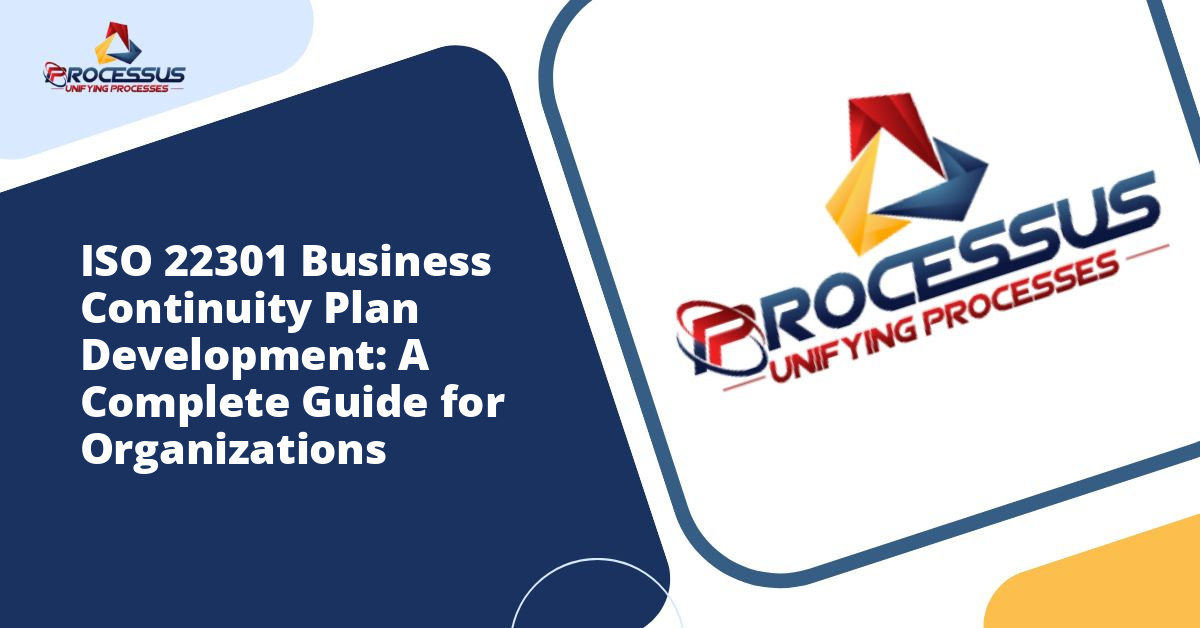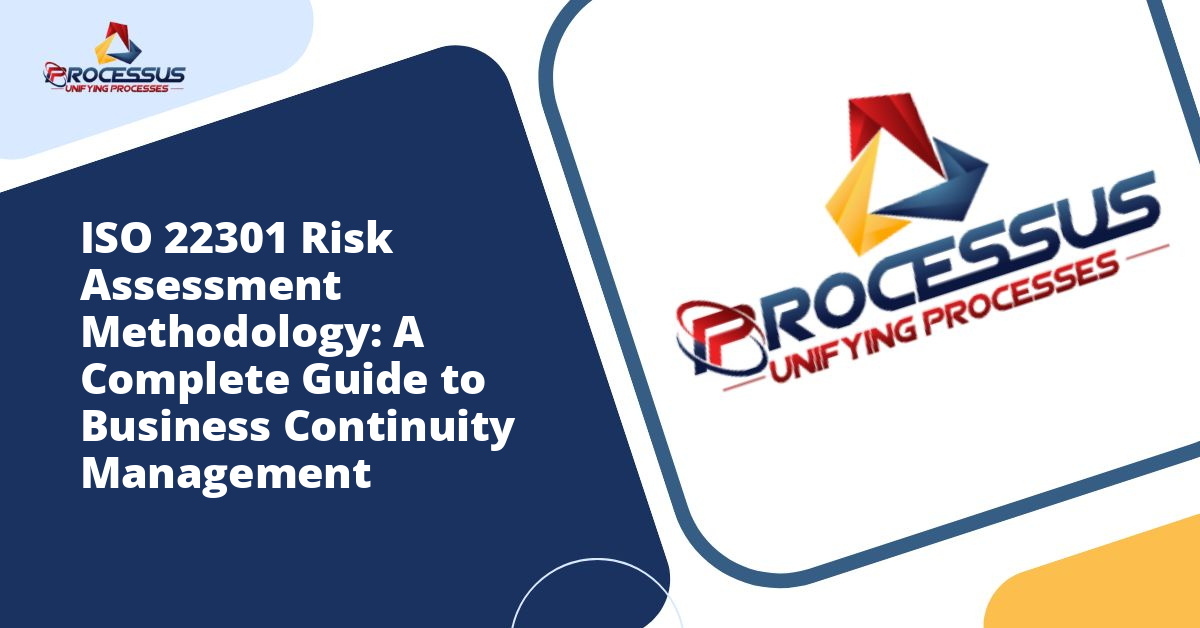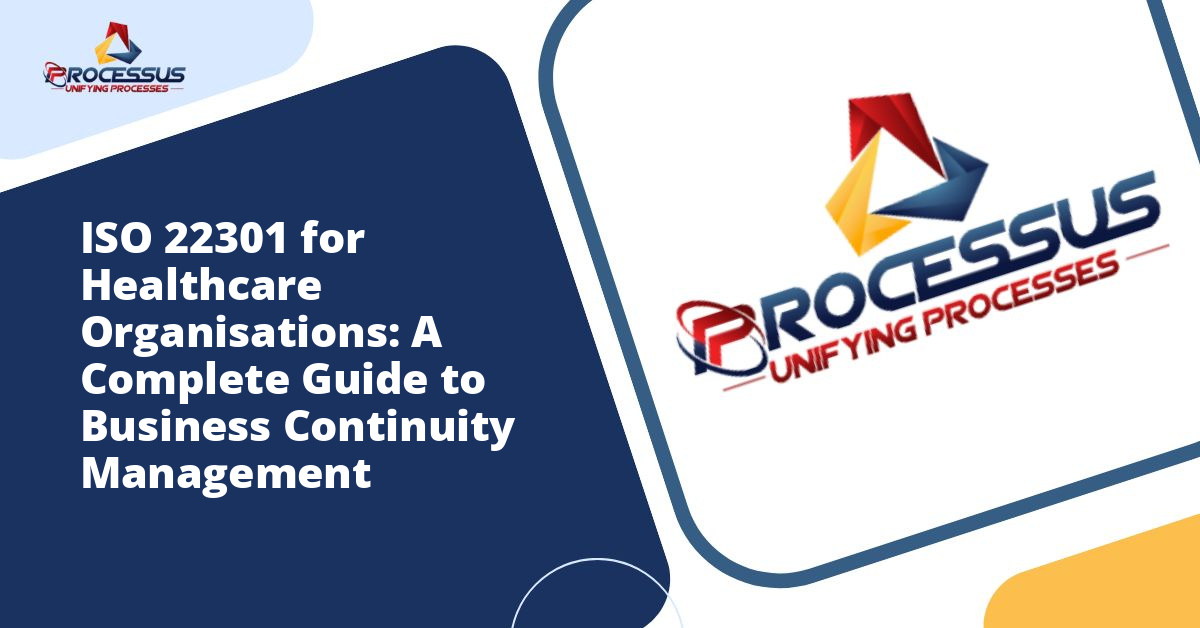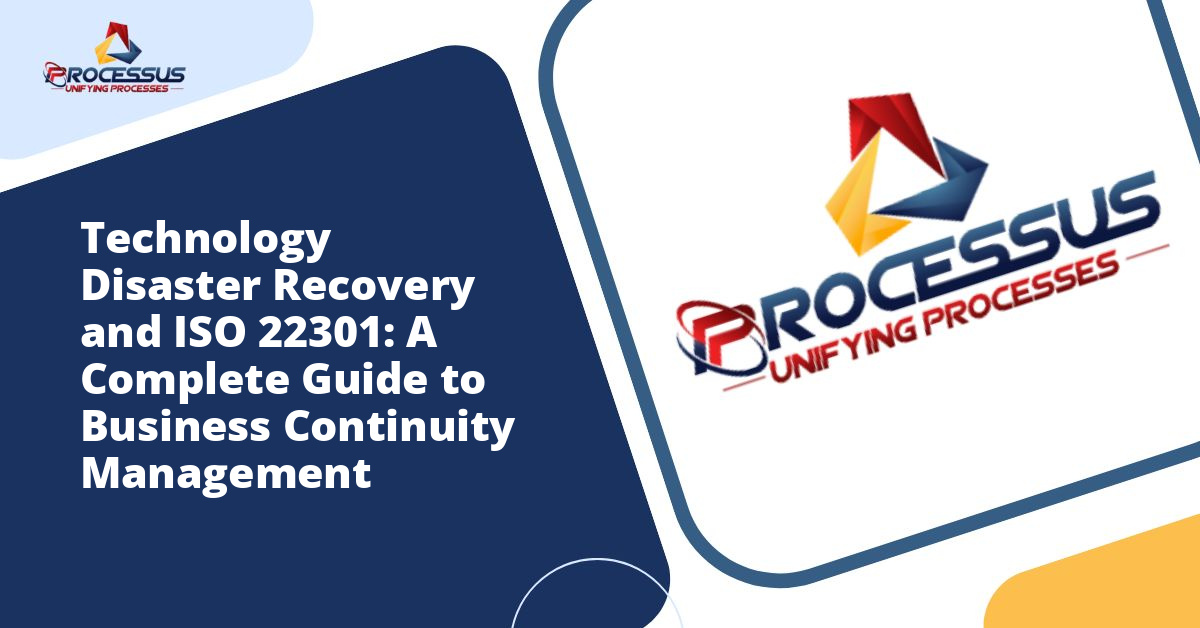In today’s rapidly changing business environment, organizations face an unprecedented array of threats that can disrupt operations. From natural disasters and cyberattacks to pandemics and supply chain failures, the ability to maintain business continuity has become a critical success factor. ISO 22301, the international standard for Business Continuity Management Systems (BCMS), provides a structured framework for organizations to prepare for, respond to, and recover from disruptive incidents.
This comprehensive guide explores the essential elements of developing a Business Continuity Plan (BCP) aligned with ISO 22301 standards, offering practical insights for organizations seeking to enhance their resilience and safeguard their operations.
Understanding ISO 22301 and Its Importance
ISO 22301 is the globally recognized standard for business continuity management, published by the International Organization for Standardization. It establishes a systematic approach to managing business continuity within an organization, ensuring that critical functions can continue during and after a disruption.
The standard applies to organizations of all sizes and sectors, whether public or private. By adopting ISO 22301, companies demonstrate their commitment to operational resilience, customer satisfaction, and stakeholder confidence. The framework helps organizations identify potential threats, assess their impact, and implement strategies to minimize disruption.
Key Benefits of Implementing ISO 22301
Organizations that develop their Business Continuity Plans according to ISO 22301 gain several significant advantages:
- Enhanced ability to identify and respond to threats before they escalate into major disruptions
- Improved organizational resilience and capacity to adapt to changing circumstances
- Greater stakeholder confidence through demonstrated commitment to continuity
- Competitive advantage in markets where business continuity certification is valued
- Reduced insurance premiums and liability exposure
- Better compliance with regulatory requirements and contractual obligations
- Stronger reputation and brand protection during crisis situations
The Foundation of ISO 22301: Core Principles
Before diving into plan development, it is essential to understand the core principles that underpin ISO 22301. These principles guide the entire business continuity management process and ensure that the resulting plans are effective and sustainable.
Leadership and Commitment
Successful business continuity planning begins at the top. Senior management must demonstrate visible commitment to the BCMS by allocating adequate resources, defining clear policies, and integrating business continuity into the organization’s culture. Leadership sets the tone for how seriously the organization takes preparedness and resilience.
Risk-Based Approach
ISO 22301 emphasizes a risk-based methodology. Organizations must systematically identify potential threats, assess their likelihood and potential impact, and prioritize resources accordingly. This approach ensures that planning efforts focus on the most significant risks rather than attempting to prepare for every conceivable scenario.
Continuous Improvement
Business continuity is not a one-time project but an ongoing process. The standard requires regular testing, evaluation, and refinement of continuity plans. As the business environment evolves, so too must the strategies for maintaining operational resilience.
Step-by-Step Process for Developing an ISO 22301 Business Continuity Plan
Developing a comprehensive Business Continuity Plan aligned with ISO 22301 involves several interconnected phases. Each phase builds upon the previous one, creating a robust framework for organizational resilience.
Phase 1: Establishing Context and Scope
The first step in developing your BCP is to establish the context and scope of your business continuity efforts. This involves understanding your organization’s internal and external environment, including stakeholder expectations, regulatory requirements, and operational dependencies.
Begin by defining the scope of your BCMS. Which parts of the organization will be covered? Will the plan encompass all locations and functions, or will it initially focus on specific areas? The scope should be clearly documented and communicated to all relevant parties.
Next, identify interested parties and their requirements. Stakeholders might include customers, employees, suppliers, regulators, shareholders, and the community. Understanding their needs and expectations helps ensure that your continuity plans address the concerns most critical to your organization’s success.
Phase 2: Conducting Business Impact Analysis
The Business Impact Analysis (BIA) is a cornerstone of effective business continuity planning. This systematic process identifies and evaluates the potential effects of disruptions on critical business operations.
Start by identifying all business functions and processes within your scope. For each function, determine its criticality by assessing what would happen if it were disrupted. Consider financial impacts, reputational damage, regulatory consequences, and effects on customer service.
Establish Recovery Time Objectives (RTO) and Recovery Point Objectives (RPO) for each critical function. The RTO defines the maximum acceptable downtime before serious consequences occur, while the RPO specifies the maximum acceptable data loss measured in time. These metrics guide your recovery strategies and resource allocation.
Document dependencies and interconnections between functions. Modern organizations operate as complex systems where disruption in one area can cascade through others. Understanding these relationships is crucial for effective planning.
Phase 3: Risk Assessment and Evaluation
With your Business Impact Analysis complete, the next phase involves comprehensive risk assessment. This process identifies potential threats that could disrupt your operations and evaluates their likelihood and potential impact.
Consider a wide range of threat scenarios, including natural disasters such as earthquakes, floods, and hurricanes; technological failures like IT system crashes or power outages; human factors including accidents, errors, and malicious acts; and external events such as supply chain disruptions or pandemic outbreaks.
For each identified risk, assess both its probability and potential consequences. This evaluation helps prioritize which risks require the most attention and resources. Use a consistent methodology to ensure comparability across different risk types.
Determine your organization’s risk appetite and tolerance levels. Not all risks can or should be completely eliminated. Understanding how much risk your organization is willing to accept helps guide decision-making about mitigation strategies and resource allocation.
Phase 4: Developing Business Continuity Strategies
Based on your BIA and risk assessment, develop specific strategies to maintain or quickly restore critical functions during disruptions. These strategies form the heart of your Business Continuity Plan.
Consider multiple strategy types to address different scenarios. These might include alternative work locations for facility disruptions, backup systems and redundant infrastructure for technology failures, alternative suppliers or inventory buffers for supply chain interruptions, and cross-training programs to address staffing shortages.
Evaluate each strategy’s feasibility, cost, and effectiveness. The goal is to select strategies that provide adequate protection within acceptable resource constraints. Document the rationale for your choices to support future reviews and updates.
Develop detailed procedures for implementing each strategy. These procedures should be clear enough that someone unfamiliar with the process could follow them during a high-stress situation. Include step-by-step instructions, contact information, and decision-making criteria.
Phase 5: Creating the Business Continuity Plan Document
Now it is time to consolidate your analysis, strategies, and procedures into a comprehensive Business Continuity Plan document. This document serves as the primary reference during actual disruptions and should be both thorough and accessible.
Your BCP should include several key sections. Begin with an introduction that outlines the plan’s purpose, scope, and objectives. Include an overview of your business continuity policy and management commitment.
Provide detailed response procedures for different types of incidents. These procedures should cover initial response, assessment, activation of continuity strategies, communication protocols, and recovery operations. Organize information logically so that users can quickly find what they need during an emergency.
Include comprehensive contact lists with primary and backup contacts for key personnel, vendors, emergency services, and other critical parties. Keep this information current through regular updates.
Document roles and responsibilities clearly. Everyone involved in business continuity should understand their specific duties during an incident. Consider creating role cards or quick reference guides that individuals can keep readily accessible.
Incorporate supporting information such as facility layouts, system diagrams, inventory lists, and contractual agreements. This documentation helps response teams understand the resources available and make informed decisions.
Phase 6: Implementing Supporting Programs
A written plan is valuable only if the organization can execute it effectively. Implementation requires several supporting programs and initiatives.
Develop a comprehensive training program to ensure all personnel understand their roles in business continuity. Training should be role-specific, with detailed instruction for those with direct responsibilities and general awareness for all employees.
Establish a regular exercise and testing schedule. Exercises range from simple tabletop discussions to full-scale simulations and should progressively increase in complexity. Testing reveals gaps in plans, builds team confidence, and validates that strategies will work as intended.
Create a maintenance schedule for keeping plans current. Business continuity plans can quickly become outdated as organizations change. Regular reviews should occur at least annually, with updates triggered by significant organizational changes.
Implement a communication strategy that addresses both internal and external stakeholders. During a disruption, timely and accurate communication is essential for maintaining trust and coordinating response efforts.
Integration with Organizational Management Systems
ISO 22301 follows the same high-level structure as other ISO management system standards, facilitating integration with existing systems such as ISO 9001 (Quality Management), ISO 27001 (Information Security), and ISO 14001 (Environmental Management).
Integration offers several advantages, including reduced duplication of effort, more efficient use of resources, and a more holistic approach to organizational management. Common elements like risk assessment, document control, and internal audits can be coordinated across multiple management systems.
When integrating business continuity with other management systems, look for natural connections and shared processes. For example, information security incident response procedures might feed into broader business continuity plans, while quality management processes can inform continuity strategy development.
Common Challenges and How to Overcome Them
Developing and implementing an ISO 22301-compliant Business Continuity Plan presents several common challenges. Understanding these obstacles and their solutions helps organizations navigate the process more effectively.
Securing Leadership Buy-In
Without strong leadership support, business continuity initiatives often struggle to gain traction. Overcome this challenge by clearly articulating the business case for continuity planning, including risk reduction, competitive advantage, and regulatory compliance. Use real-world examples of organizations affected by disruptions to make the need tangible.
Resource Constraints
Many organizations struggle to allocate sufficient resources to business continuity planning. Address this by taking a phased approach, starting with the most critical functions and gradually expanding coverage. Demonstrate early wins to build momentum and justify additional investment.
Complexity and Scope Creep
Business continuity planning can quickly become overwhelming if scope is not carefully managed. Start with a clearly defined scope and resist the temptation to expand too quickly. Focus on completing a solid foundation before adding complexity.
Maintaining Engagement
Keeping people engaged with business continuity between actual incidents can be difficult. Make planning relevant through regular exercises, real-world examples, and integration with daily operations. Celebrate successes and recognize contributions to maintain enthusiasm.
Measuring Success and Continuous Improvement
ISO 22301 requires organizations to establish metrics for evaluating BCMS effectiveness. These metrics help demonstrate value, identify improvement opportunities, and satisfy audit requirements.
Consider both leading and lagging indicators. Leading indicators might include the percentage of staff trained, number of exercises completed, or time to update plans after organizational changes. Lagging indicators could include actual recovery times during incidents, costs of disruptions, or customer satisfaction during events.
Conduct regular management reviews to assess overall BCMS performance. These reviews should examine metric trends, audit findings, exercise results, and actual incident experiences. Based on this analysis, identify opportunities for improvement and allocate resources accordingly.
Establish a formal corrective action process to address identified gaps and deficiencies. Track these actions to completion and verify their effectiveness. This systematic approach to improvement ensures that your BCMS evolves and strengthens over time.
Certification and External Validation
While not mandatory, many organizations choose to pursue formal ISO 22301 certification. Certification provides independent validation of your BCMS and can offer significant competitive and reputational benefits.
The certification process involves an external audit by an accredited certification body. Auditors assess whether your BCMS meets all ISO 22301 requirements and is effectively implemented. The process typically includes a documentation review followed by an on-site assessment.
Prepare for certification by conducting internal audits to identify and address gaps before the formal assessment. Ensure that all required documentation is complete and that personnel understand their roles. Treat the certification audit as a learning opportunity rather than merely a test to pass.
Even if formal certification is not pursued, consider engaging external experts to review your plans periodically. Fresh perspectives often identify blind spots and bring valuable insights from other organizations and industries.
The Future of Business Continuity Management
Business continuity management continues to evolve in response to emerging threats and changing business models. Several trends are shaping the future of the discipline.
Digital transformation is both enabling and challenging business continuity. Cloud computing, remote work capabilities, and digital collaboration tools provide new options for maintaining operations during disruptions. However, increased digitization also creates new vulnerabilities and dependencies that must be managed.
Climate change is increasing the frequency and severity of weather-related disruptions. Organizations must adapt their continuity strategies to account for these changing risk profiles, potentially requiring more robust mitigation measures and alternative approaches to traditional strategies.
Global interconnectedness means that disruptions in one part of the world can quickly affect organizations everywhere. Business continuity planning must increasingly take a global perspective, considering risks and dependencies across international supply chains and operations.
Stakeholder expectations continue to rise. Customers, investors, and regulators increasingly expect organizations to demonstrate resilience and transparency about their preparedness. Business continuity is evolving from a technical discipline to a strategic imperative with board-level visibility.
Conclusion
Developing a Business Continuity Plan aligned with ISO 22301 standards represents a significant investment of time and resources. However, this investment pays dividends by enhancing organizational resilience, protecting stakeholder interests, and providing competitive advantage.
The structured approach provided by ISO 22301 ensures that business continuity efforts are comprehensive, systematic, and effective. By following the framework outlined in this guide, organizations can develop robust continuity capabilities that withstand the test of actual disruptions.
Remember that business continuity is a journey rather than a destination. The most effective programs are those that embrace continuous improvement, adapt to changing circumstances, and maintain strong leadership commitment. Start where you are, focus on what matters most, and build progressively toward greater resilience.
In an uncertain world, the question is not whether your organization will face disruption, but when. Organizations that invest in business continuity planning today will be better positioned to navigate whatever challenges tomorrow brings, protecting their people, operations, and reputation in the face of adversity.







